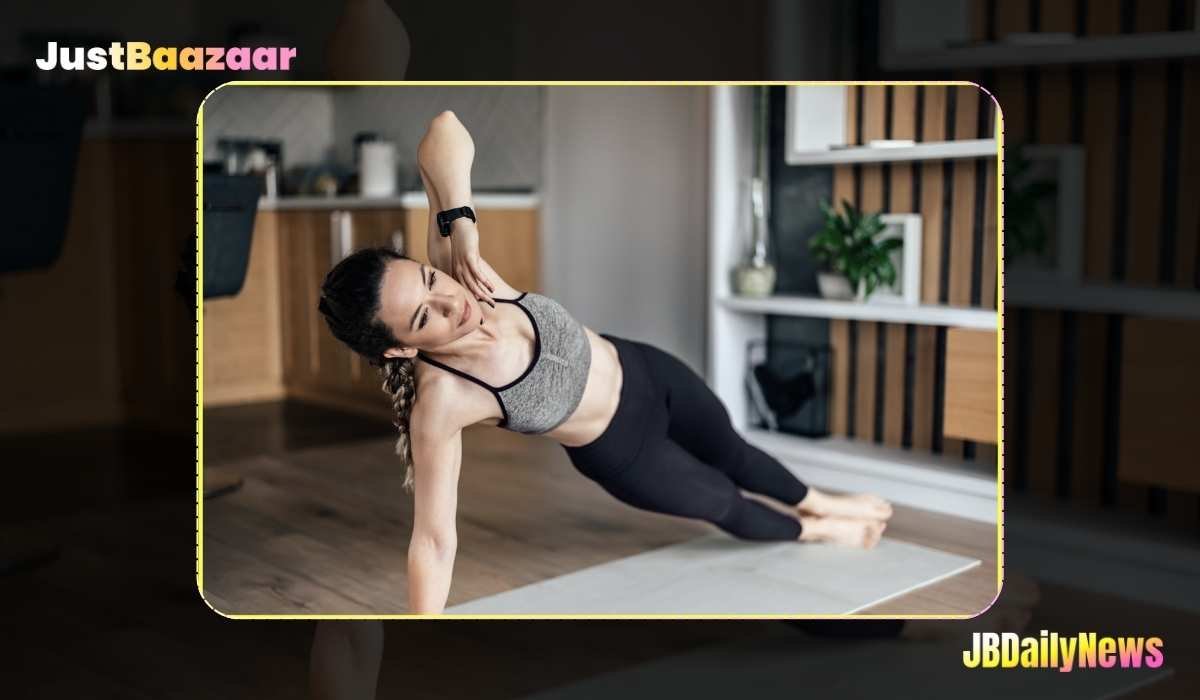Calisthenics is a dynamic, accessible, and powerful form of physical exercise that uses your body weight as resistance. Its origins go back thousands of years, with roots in ancient Greece, but it has recently gained popularity among fitness enthusiasts due to its simplicity, versatility, and effectiveness. This guide dives deep into the world of calisthenics, covering its benefits, foundational exercises, workout plans, and tips for beginners, helping you master this bodyweight training discipline.

What is Calisthenics?
Calisthenics derives from two Greek words: kallos (meaning “beauty”) and sthenos (meaning “strength”). This form of exercise emphasizes movements that require minimal equipment, using only body weight. Calisthenics can be performed anywhere, from your living room to a park, and doesn’t require a gym membership or expensive equipment. Exercises include movements like push-ups, pull-ups, squats, lunges, and more advanced techniques like muscle-ups and planches.
Benefits of Calisthenics
- Improves Strength and Muscle Definition
- Since calisthenics involves multiple muscle groups simultaneously, it builds functional strength, helping you perform daily activities more efficiently.
- Enhances Flexibility and Mobility
- Calisthenics involves a range of motion exercises, improving joint flexibility and muscle elasticity.
- Promotes Fat Loss
- Calisthenics is an intense workout form, burning calories while boosting metabolism, leading to fat loss when combined with a balanced diet.
- Boosts Cardiovascular Health
- Many calisthenics exercises raise the heart rate, promoting heart health and enhancing stamina.
- Increases Balance and Coordination
- Bodyweight exercises in calisthenics require stabilizing muscles, improving balance and proprioception.
- Develops Mind-Body Connection
- Calisthenics requires focus, precision, and control, which can boost mental clarity and foster a strong connection between the mind and body.
Basic Calisthenics Exercises
Here are some foundational exercises you should master before advancing to more complex movements:
- Push-Ups
- Muscles Worked: Chest, triceps, and shoulders.
- How to Do It: Start in a plank position with hands shoulder-width apart. Lower your chest toward the floor, keeping your body straight, and then push back up.
- Pull-Ups
- Muscles Worked: Back, biceps, and shoulders.
- How to Do It: Hang from a bar with palms facing away from you. Pull yourself up until your chin is above the bar, then lower yourself back down with control.
- Dips
- Muscles Worked: Triceps, shoulders, and chest.
- How to Do It: Use parallel bars or a sturdy surface. Lower your body by bending the elbows, keeping your chest upright, and push back up.
- Squats
- Muscles Worked: Quadriceps, glutes, and hamstrings.
- How to Do It: Stand with feet shoulder-width apart, lower your body as if sitting back, keeping knees behind toes, then return to standing.
- Lunges
- Muscles Worked: Quadriceps, glutes, and hamstrings.
- How to Do It: Step forward with one leg, lowering the back knee toward the ground, and then return to the starting position.
- Planks
- Muscles Worked: Core.
- How to Do It: Hold a push-up position with elbows on the ground, keeping your body straight from head to heels.
- Leg Raises
- Muscles Worked: Abs and hip flexors.
- How to Do It: Lie on your back, lift your legs toward the ceiling, and lower them slowly without touching the ground.
Calisthenics Workout Plan for Beginners
This workout plan includes foundational exercises to build strength, endurance, and flexibility.
Day 1: Upper Body
- Push-Ups: 3 sets of 10–15 reps
- Pull-Ups (assisted if necessary): 3 sets of 5–10 reps
- Dips: 3 sets of 8–12 reps
- Planks: 3 sets of 30–60 seconds hold
Day 2: Lower Body
- Squats: 3 sets of 15–20 reps
- Lunges: 3 sets of 10 reps per leg
- Calf Raises: 3 sets of 15 reps
- Leg Raises: 3 sets of 10–12 reps
Day 3: Rest or Light Cardio
Day 4: Core and Balance
- Plank Variations: Side planks, reverse plank (30–60 seconds hold)
- Russian Twists: 3 sets of 15 reps per side
- Mountain Climbers: 3 sets of 20 reps per side
- Leg Raises: 3 sets of 10 reps
Day 5: Full-Body Circuit
- Perform each exercise for 45 seconds with 15 seconds rest between each.
- Push-Ups
- Squats
- Pull-Ups
- Lunges
- Dips
- Leg Raises
- Planks (hold)
Day 6: Active Rest or Light Cardio
Day 7: Rest
Progressing in Calisthenics
Once you’ve built a strong foundation, you can begin incorporating advanced calisthenics exercises into your routine. Examples include:
- Muscle-Ups: Combines a pull-up and dip in one fluid motion, targeting multiple muscle groups.
- Handstand Push-Ups: Requires strength and stability, focusing on shoulders and core.
- Planching: A challenging exercise that involves holding your body parallel to the ground.
Tips for Calisthenics Success
- Focus on Form
- Proper form is essential in calisthenics to avoid injury and ensure optimal muscle engagement.
- Be Consistent
- Progress in calisthenics takes time and regular practice, so stick to your routine.
- Challenge Yourself
- Gradually increase reps, try new exercises, or add variations to avoid plateaus.
- Combine with a Balanced Diet
- Calisthenics will help build muscle and strength, but nutrition is key for visible results and overall health.
- Warm-Up and Cool Down
- Stretching and warming up are essential to prevent injuries and improve flexibility.
Common Mistakes in Calisthenics
- Skipping Fundamentals: Beginners often attempt advanced moves too early, which can lead to injury.
- Inadequate Warm-Up: Jumping into exercises without warming up can increase the risk of muscle strains.
- Neglecting Core Strength: A strong core stabilizes your body during many calisthenics movements, so core exercises should be a priority.
- Impatience: Calisthenics is a journey. Set realistic goals, celebrate small achievements, and stay motivated.
Conclusion
Calisthenics is a rewarding fitness discipline that builds strength, flexibility, and endurance while also enhancing mental resilience. With minimal equipment and the flexibility to train anywhere, it is accessible to everyone. Consistency, patience, and a solid foundation in basic exercises will help you progress to advanced movements, transforming your body and improving your overall health. Start your calisthenics journey today and unlock the potential of your own body weight for fitness and strength!
1. What is calisthenics, and how does it differ from weightlifting?
Calisthenics is a form of physical exercise that uses your body weight as resistance to improve strength, flexibility, and overall fitness. Exercises in calisthenics include movements like push-ups, pull-ups, squats, and planks, and can progress to more challenging forms like handstands and muscle-ups. It can be done anywhere, as it typically doesn’t require equipment.
Difference from Weightlifting: Weightlifting, on the other hand, relies on external weights like dumbbells, barbells, and machines to build muscle. Weightlifting isolates muscles and often focuses on adding resistance over time to increase muscle size and strength. Calisthenics uses body weight for resistance and focuses on functional strength, balance, and body control, often involving multiple muscle groups simultaneously.
2. Is calisthenics effective for muscle growth?
Yes, calisthenics can be effective for muscle growth, particularly when performed with proper form, progressive overload, and varied routines. In calisthenics, increasing the difficulty of exercises (such as advancing from regular push-ups to one-arm push-ups) adds intensity, which can lead to muscle growth. Advanced moves like muscle-ups, front levers, and planches place high demands on muscles and build strength and size. While calisthenics may not produce the same bulk as traditional weightlifting, it builds a lean, defined, and functional physique.
3. What are the best beginner exercises for calisthenics?
For beginners, mastering basic calisthenics exercises will build the foundation of strength, flexibility, and endurance needed for more advanced moves. Key beginner exercises include:
- Push-Ups: Strengthens chest, triceps, and shoulders.
- Pull-Ups (or Assisted Pull-Ups): Builds back, biceps, and shoulders.
- Squats: Works the lower body, including quadriceps, hamstrings, and glutes.
- Planks: Strengthens the core, improving stability and balance.
- Lunges: Develops leg strength and balance.
- Dips (or Chair Dips): Strengthens triceps and chest muscles.
Starting with these exercises and gradually increasing reps or difficulty can help beginners establish a solid fitness foundation.
4. How often should I do calisthenics workouts?
For beginners, calisthenics workouts can be done around 3 to 4 times per week, with rest days in between to allow muscles to recover. For those with intermediate or advanced experience, training 5 to 6 times per week with targeted days for different muscle groups (such as upper body, lower body, and core) can be effective. The ideal frequency depends on individual fitness levels, goals, and recovery capacity.
Listening to your body and ensuring proper recovery time is key, as rest is essential for muscle growth and preventing injury.
30-Day Calisthenics Workout Plan

Structure:
- Day 1-10: Building Basic Strength and Endurance
- Day 11-20: Increasing Volume and Adding Core Focus
- Day 21-30: Introducing Progressions and Higher Intensity
Days 1-10: Foundation Phase
During the first 10 days, you’ll focus on foundational exercises to build basic strength, endurance, and form.
- Frequency: 3 days on, 1 day off
- Goal: Learn correct form and build initial endurance
| Day | Exercise | Sets | Reps | Rest |
|---|---|---|---|---|
| 1 | Push-Ups | 3 | 8-12 | 60 seconds |
| Bodyweight Squats | 3 | 12-15 | 60 seconds | |
| Plank | 3 | 20-30 seconds hold | 60 seconds | |
| 2 | Pull-Ups (assisted if needed) | 3 | 5-8 | 60 seconds |
| Lunges (each leg) | 3 | 10-12 | 60 seconds | |
| Leg Raises | 3 | 10-12 | 60 seconds | |
| 3 | Push-Ups | 3 | 8-12 | 60 seconds |
| Squats | 3 | 12-15 | 60 seconds | |
| Side Planks | 3 | 15-20 seconds each | 60 seconds | |
| 4 | Rest | |||
| 5 | Repeat Day 1 | |||
| 6 | Repeat Day 2 | |||
| 7 | Repeat Day 3 | |||
| 8 | Rest | |||
| 9 | Repeat Day 1 | |||
| 10 | Repeat Day 2 |
Days 11-20: Increasing Volume & Core Focus
In the second 10 days, increase the number of sets and reps slightly to build endurance. This phase also adds more core exercises.
- Frequency: 3 days on, 1 day off
- Goal: Improve endurance and strengthen core
| Day | Exercise | Sets | Reps | Rest |
|---|---|---|---|---|
| 11 | Push-Ups | 4 | 10-15 | 60 seconds |
| Bodyweight Squats | 4 | 15-20 | 60 seconds | |
| Plank | 3 | 30-45 seconds hold | 60 seconds | |
| 12 | Pull-Ups (assisted if needed) | 4 | 6-10 | 60 seconds |
| Lunges (each leg) | 4 | 12-15 | 60 seconds | |
| Leg Raises | 3 | 12-15 | 60 seconds | |
| 13 | Push-Ups | 4 | 10-15 | 60 seconds |
| Squats | 4 | 15-20 | 60 seconds | |
| Side Planks | 3 | 20-30 seconds each | 60 seconds | |
| Russian Twists | 3 | 15 per side | 60 seconds | |
| 14 | Rest | |||
| 15 | Repeat Day 11 | |||
| 16 | Repeat Day 12 | |||
| 17 | Repeat Day 13 | |||
| 18 | Rest | |||
| 19 | Repeat Day 11 | |||
| 20 | Repeat Day 12 |
Days 21-30: Progression and Intensity
In the final 10 days, you’ll progress some exercises to higher-intensity versions to continue challenging your muscles.
- Frequency: 3 days on, 1 day off
- Goal: Begin progression to harder movements, add intensity
| Day | Exercise | Sets | Reps | Rest |
|---|---|---|---|---|
| 21 | Decline Push-Ups | 4 | 8-12 | 60 seconds |
| Bulgarian Split Squats (each leg) | 4 | 10-12 | 60 seconds | |
| Plank | 4 | 45-60 seconds hold | 60 seconds | |
| 22 | Chin-Ups (assisted if needed) | 4 | 6-10 | 60 seconds |
| Single-Leg Squats (or pistol squats) | 3 | 5-8 per leg | 60 seconds | |
| Leg Raises | 4 | 15 | 60 seconds | |
| 23 | Decline Push-Ups | 4 | 10-15 | 60 seconds |
| Squats (try jump squats if able) | 4 | 15-20 | 60 seconds | |
| Side Planks | 4 | 30-45 seconds each | 60 seconds | |
| Mountain Climbers | 3 | 20-30 per side | 60 seconds | |
| 24 | Rest | |||
| 25 | Repeat Day 21 | |||
| 26 | Repeat Day 22 | |||
| 27 | Repeat Day 23 | |||
| 28 | Rest | |||
| 29 | Repeat Day 21 | |||
| 30 | Full-Body Circuit | 3 | 30 seconds per move, repeat circuit 2-3 times | 30 seconds between exercises |
Tips for Success
- Warm-Up and Cool Down: Spend 5–10 minutes warming up and stretching each session.
- Focus on Form: Quality over quantity. Good form prevents injury and maximizes effectiveness.
- Hydration and Nutrition: Eat a balanced diet rich in protein, healthy fats, and complex carbs to fuel workouts.
- Listen to Your Body: Rest if you feel sore or fatigued, as recovery is essential for progress.
This 30-day plan is designed to be flexible, so adjust reps, sets, and exercises based on your comfort level and progress. After this, you’ll be ready to explore intermediate calisthenics exercises and routines!


















